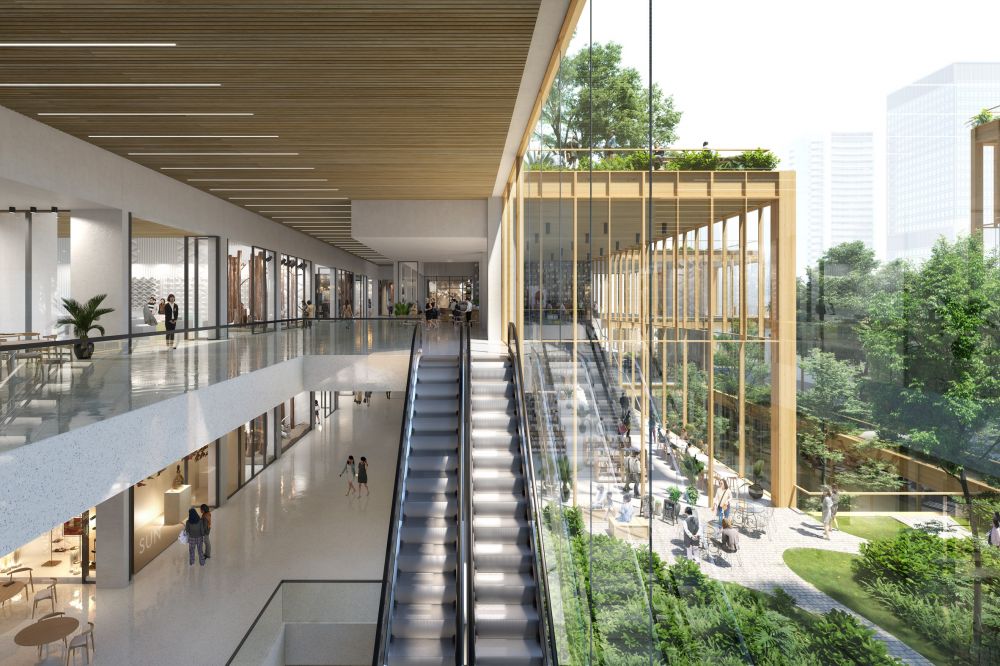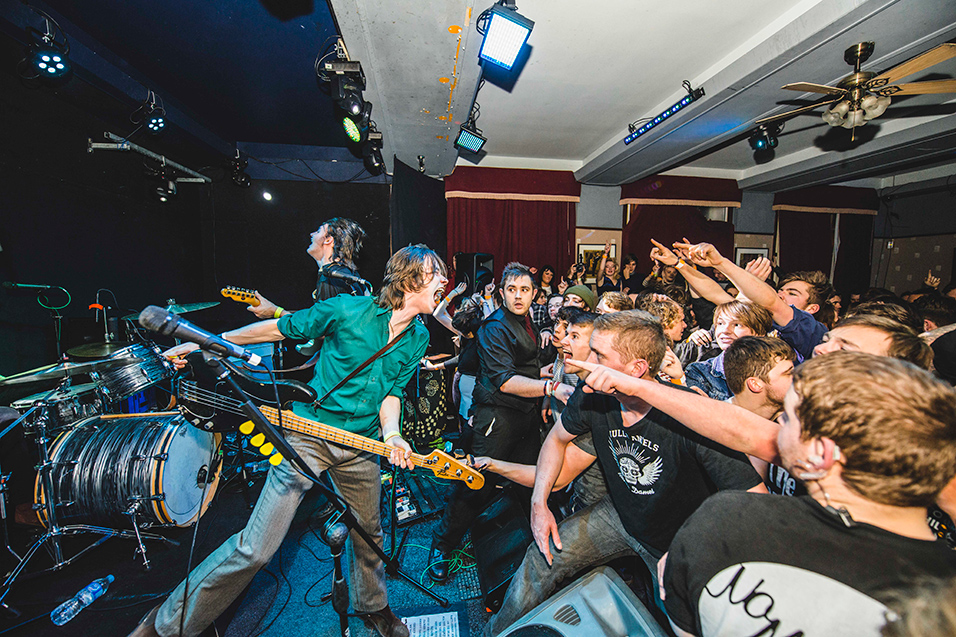A Look At South Korea's Unique Residential Architecture Through A New Exhibition

Table of Contents
Dive into the captivating world of South Korea's residential architecture with a new exhibition showcasing the country's unique design elements and historical evolution. From traditional Hanok houses to modern high-rises, this exploration unveils the diverse styles that shape the Korean landscape and reflect the nation's rich cultural heritage. This article provides an overview of the key features and influences highlighted in the exhibition.
<h2>Traditional Korean Housing: The Enduring Legacy of the Hanok</h2>
The Hanok, Korea's traditional house, stands as a testament to centuries of architectural ingenuity and cultural adaptation. Understanding its design is crucial to appreciating the evolution of South Korea's residential architecture.
<h3>Defining Characteristics of Hanok Architecture:</h3>
- Focus on natural materials: Hanoks are renowned for their use of sustainable and readily available materials such as wood, paper (hanji), and earth. This connection to nature is fundamental to their design philosophy.
- Emphasis on Ondol underfloor heating systems: The ingenious Ondol system, a radiant floor heating method, provides warmth and comfort during Korea's harsh winters, showcasing innovative heating solutions in early South Korea's residential architecture.
- Unique spatial layouts and interior design principles: Hanoks feature open and flexible floor plans, often incorporating courtyards and distinct rooms for various activities. This reflects a deep understanding of how spaces should function within the Korean lifestyle.
- Regional variations in Hanok design: The design of Hanoks varied across different regions of Korea, reflecting local climates and building materials. This diversity adds to the richness of Korean architectural heritage.
- The role of courtyards and gardens in Hanok design: Courtyards and gardens are integral components of Hanok design, providing natural light, ventilation, and a connection to nature. They are a key element of the traditional Korean aesthetic that influences much of South Korea's residential architecture.
<h3>The Hanok's Adaptation and Preservation in Modern Korea:</h3>
- Challenges in preserving traditional building techniques: The preservation of Hanok architecture faces challenges such as the scarcity of skilled craftsmen and the high cost of maintaining these structures.
- Modern interpretations of Hanok design in contemporary buildings: Contemporary architects are increasingly incorporating Hanok design elements into modern buildings, bridging the gap between tradition and modernity in South Korea's residential architecture.
- Government initiatives and public interest in Hanok restoration: The South Korean government has implemented several initiatives to support the preservation and restoration of Hanoks, reflecting a growing national pride in the country's heritage.
- Examples of successful Hanok renovations and new constructions: Many successful projects demonstrate the possibility of integrating traditional design features with modern amenities.
- The appeal of Hanok living in a modern context: The peaceful atmosphere and sustainable design of Hanoks are increasingly attractive to modern inhabitants, highlighting the enduring appeal of this aspect of South Korea's residential architecture.
<h2>Modern High-Rise Residential Buildings: A Blend of Tradition and Technology</h2>
The dramatic skyline of Seoul and other major Korean cities reflects a dynamic interplay between traditional aesthetics and cutting-edge technology. This section explores the remarkable evolution of high-rise residential design within South Korea's residential architecture.
<h3>The Influence of Korean Culture on Modern Design:</h3>
- Integration of traditional elements into contemporary skyscrapers: Modern high-rises often incorporate traditional Korean design elements, blending modern and traditional aesthetics seamlessly within South Korea's residential architecture.
- Emphasis on communal spaces and community living: Many modern high-rise buildings prioritize communal spaces, reflecting the importance of community in Korean culture.
- Use of sustainable and eco-friendly building materials: Korean architects are increasingly incorporating sustainable and eco-friendly building materials and technologies into high-rise designs, highlighting a commitment to environmental responsibility.
- Innovative designs reflecting Korea's technological advancements: Korean high-rise designs showcase the nation's technological prowess, often pushing the boundaries of architectural innovation.
- The role of aesthetics and functionality in high-rise design: Korean high-rise buildings prioritize both aesthetics and functionality, resulting in structures that are both visually stunning and highly efficient.
<h3>Exploring Architectural Trends in Seoul and other Major Cities:</h3>
- Analysis of notable high-rise residential projects across South Korea: Several iconic residential towers across the nation demonstrate the breadth and diversity of contemporary design.
- Comparison of design styles and approaches among different architects: A wide variety of styles and approaches reflect a thriving and competitive architectural scene in South Korea.
- Impact of urban planning regulations on high-rise architecture: Urban planning regulations play a significant role in shaping the designs of high-rise residential buildings in South Korea.
- Discussion of future trends in high-rise residential design in Korea: The future holds exciting innovations in sustainable and technologically advanced high-rise buildings.
- The challenges of high-density living in South Korea's urban centers: High-density living presents unique challenges that architects must address in their designs.
<h2>The Exhibition: A Curated Journey Through South Korean Residential Design</h2>
This exhibition offers a comprehensive exploration of the rich history and innovative future of South Korea's residential architecture.
<h3>Key Exhibits and Displays:</h3>
- Description of the exhibition's layout and organization: The exhibition’s layout is designed for a clear and engaging narrative of architectural development.
- Highlights of significant architectural models and blueprints: Detailed models and blueprints provide insightful views into the design process.
- Inclusion of photographic and video materials: Visual media enriches the visitor experience, bringing the history and innovation to life.
- Interactive elements and educational resources: Interactive components allow for engaging learning experiences for visitors of all ages.
- Guest lectures and workshops related to the exhibition: Expert talks and workshops provide additional context and enhance engagement.
<h3>Visitor Experience and Public Reception:</h3>
- Public reaction to the exhibition: Early responses have been overwhelmingly positive, demonstrating significant public interest.
- Impact of the exhibition on public awareness of Korean architecture: The exhibition seeks to increase awareness and appreciation for the nation's unique architectural heritage.
- Opportunities for learning and engagement provided by the exhibition: The exhibition provides many opportunities for learning and interaction.
- Critical reviews and appraisals of the exhibition's content: Critical analysis from experts enhances the intellectual depth of the exhibition.
- The exhibition's lasting contribution to understanding South Korea's built environment: This curated experience will undoubtedly enhance public knowledge and appreciation.
<h2>Conclusion:</h2>
This exhibition offers a unique opportunity to explore the rich tapestry of South Korea's residential architecture, showcasing the evolution from traditional Hanok homes to the striking modern high-rises that define the country's urban landscapes. By understanding the historical influences and innovative designs on display, we gain a deeper appreciation for the cultural significance of South Korea's residential architecture. Don't miss the chance to experience this fascinating exhibition and learn more about the artistry and ingenuity shaping the nation's built environment. Visit the exhibition today to further explore South Korea's residential architecture and its fascinating evolution!

Featured Posts
-
 Dy Te Vdekur Pas Sulmit Me Thike Ne Qender Tregtare Ne Ceki
May 02, 2025
Dy Te Vdekur Pas Sulmit Me Thike Ne Qender Tregtare Ne Ceki
May 02, 2025 -
 Global Commission Report Urgent Action Needed For Youth Mental Health In Canada
May 02, 2025
Global Commission Report Urgent Action Needed For Youth Mental Health In Canada
May 02, 2025 -
 1 Mayis Arbedeleri Tarihsel Bir Bakis
May 02, 2025
1 Mayis Arbedeleri Tarihsel Bir Bakis
May 02, 2025 -
 Glastonbury Festival Infuriating Stage Time Clashes Cause Fan Anger
May 02, 2025
Glastonbury Festival Infuriating Stage Time Clashes Cause Fan Anger
May 02, 2025 -
 Strengthening Us Vaccine Surveillance A Response To The Measles Outbreak
May 02, 2025
Strengthening Us Vaccine Surveillance A Response To The Measles Outbreak
May 02, 2025
